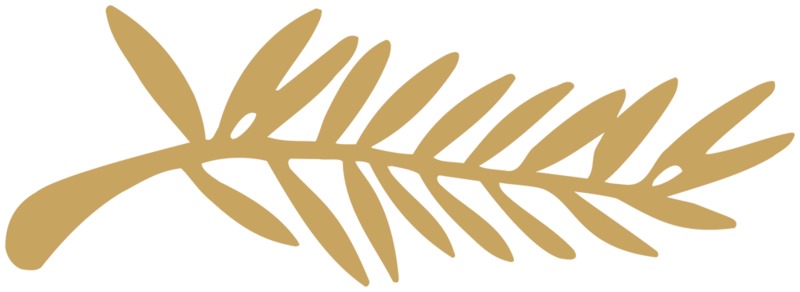Introduction
The Festival de Cannes
There are numerous film festivals held every year in different locations around the world, but the Festival de Cannes is one of only a few major international festivals, and there are some unique characteristics about how it is organized and run.
The Festival de Cannes’ (2007) historical summary states that the festival was initiated by French film makers in response to fascist politicization and influence that occurred at the 1938 Venice Film Festival, prior to the start of the Second World War. In the decades since the end of the war, the festival has typically been held annually (except in rare instances where it had to be cancelled, such as in 2020, due to the Covid-19 pandemic). Over the years, the festival has developed a reputation for recognizing and celebrating excellence in film making globally.
The Festival de Cannes is organized by The French Association of the International Film Festival and is lead by a Board of Directors. In each year of competition, the festival is comprised of different events called sections and the most important one is called The Official Selection. Within this section there are several competitive events that recognize and promote aspects of the international film industry. Each year of the competition, full length, feature films are selected by the festival’s appointed jurors to be In Competition, and these films are eligible for the festival’s top award, the Palme d’Or (Wikipedia, 2021).
The Festival de Cannes (2021) regulations for inclusion in the Official Selection require that eligible films:
- must have been completed within twelve months of the current Festival
- are films where there has been no release outside of the production country, for any other international film events, or on the internet
Additionally, the Official Selection competition has several awards other than the Palme d’Or, including Prix d’interprétation masculine (Best Actor) and Prix d’interprétation féminine (Best Actress). However, under most circumstances and unless given special exception by the the Festival President, films in the Official Selection can only win one award.
Finally, the Festival de Cannes is held primarily for the benefit of professionals in the film industry rather than the interests of members of the public. For instance, only those involved in making the films in the Official Selection each year are invited to attend the official film screenings and events associated with the competition. Dina Iordanova (2018), Professor of Global Cinema and Creative Cultures at University of St Andrews in Scotland explains that the showing of films is not the primary objective of the Festival de Cannes, but the competition is mainly a place to conduct business among members of an exclusive group.
About the Problems Being Explored
My goal for this data project is to explore representation at the Palme d’Or competition and how the issue of exclusivity is relevant there. In doing so, as with Catherine D’Ignazio and Lauren F. Klein’s (2020) data feminism work, I am using data in a way that is based on and supported by intersectional feminist ideas, to demonstrate the unequal balance of power that exists both inside and outside of the film industry, which typically puts cisgender men, who are also white, straight, and abled in positions ahead of those who are not, via marginalization or outright exclusion.
The Data
Consisting of data analysis and a corresponding collection of graphics, this exhibit was created from a curated dataset based on films in competition from 2016 through 2021 for the Palme d’Or award, which is the highest honour at the Festival de Cannes international film competition.
The dataset is built around three groups of people with different roles connected to the creation of each film in the competition: the directors, who are the recipients of the Palme d'Or award, and the cast leads and character leads, because these are the people who are the primary visible representation for the story of each film.
Relevant Concepts
To participate in the Festival de Cannes, one must be a professional in the film industry. Those trying to enter or continue working in the industry must contend with numerous cultural and structural elements that can affect their chances of success there. In this exploration of representation at the Palme d’Or competition, I am looking to see to what extent or how, exclusion or privilege may affect those who have a significant part in what is considered a prestigous, global film industry event by taking several feminist concepts into consideration.
These concepts include: the practice of viewing material or acting from a default male perspective or position as described in the work of British writer and activist Caroline Criado-Perez (2019); the concept of intersectionality of different facets of identity, such as gender, race, sexual orientation, and disability, which was introduced by American civil rights activist and scholar Kimberlé Crenshaw (1989, 1991); and the matrix of domination, a Black feminist sociological framework of four domains that illustrates the ways that power systems are arranged and interconnected, which was developed by American academic and professor Patricia Hill Collins (2009).
Criado-Perez’s concept of the default male can be seen as one factor contributing to bias towards men and sexism against women in the film industry; and also, a reason for the common exclusion of those who are not men from working in this field. Crenshaw’s concept of intersectionality and Hill Collins’ matrix of domination framework are concepts which can demonstrate how people can be affected by both oppression and privilege in more ways than one, depending on different facets of their identity.
Intersectionality is significant here because film industry workers may face different types and combinations of barriers to accomplishment or recognition depending on their gender, race, and other facets of identity. For instance, a Black female film maker may face oppression in her work based on both sexism and racism, while a Black male film maker may have the privilege of not facing sexism but may still face racism in his work.
Likewise, barriers to success in the film industry can be observed and understood using Hill Collins' matrix of domination. D’Ignazio and Klein (2020) explain that the matrix of domination can be used to show how people experience power systems based on their own combination of facets of identity and how these intersect. Those working in the film industry are affected by the matrix of domination in all four of its domains, for example:
- Structural domain – people have been legally barred from schools (including film schools) and places of employment (such as production companies) because of their gender and/or race.
- Disciplinary domain – hiring or funding committees, or casting agencies perpetuate sexist or racist hiring practices.
- Hegemonic/cultural domain – society’s idea of who can make or star in films.
- Interpersonal domain – minoritized individuals are not cast in roles and therefore do not see themselves or their stories portrayed in films.
In addition to the concepts of the default male, intersectionality, and the matrix of domination, I am also looking to identify outliers in my dataset, a concept described in the work of Brooke Foucault Welles (2014). To do so, I will identify groups of people whose stories are underrepresented at the Festival de Cannes and put a spotlight on areas of potential growth towards equity in this film industry arena.
Related Research
An organization that has done significant research on inequality in the entertainment industry is the Annenberg Inclusion Initiative, which is based out of the University of Southern California, USC School for Communication and Journalism. The Annenberg Inclusion Initiative conducts research on inequality in media globally; and their reporting on inequality in popular films provides excellent examples of underrepresentation in film, particularly in the American film industry or Hollywood. In one example from a longstanding area of their research, the Annenberg Inclusion Initiative (2020) reports on consistant trends of representation disparity in films, from 2007 through 2019, in the United States.
In this report, the Annenberg Inclusion Initiative states that for the 100 top grossing movies in the United Sates in 2019, only 10.7% of the directors were female. Furthermore, while 66% of characters with speaking roles or who were given names were male, only 34% of these characters were female. Racial and ethnic disparity is also apparent in this set of 2019 films. There was a clear majority of white directors (80.4%) compared to a combined minority of directors who were multiracial/multiethnic (8%), black (6.3%), Asian (3.6%), and Hispanic/Latino (1.8%). Likewise, in these films, characters with a speaking role or who were named were mostly white (65%) compared to those who were from underrepresented racial/ethnic groups (34.3%). While this report does not show disparity according to sexual-orientation or disability status of the directors, these types of inequality were examined for the film characters who were named or had a speaking role; and both of these identities were represented by a very small minority with 1.4% being LGBTQ and 2.3% portrayed as having a disability.

